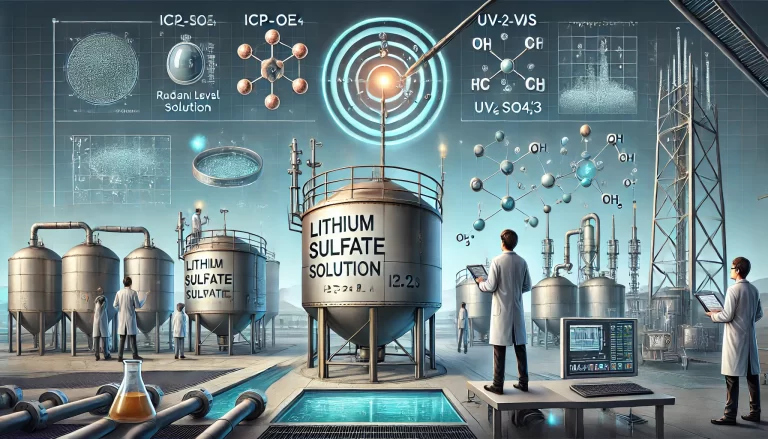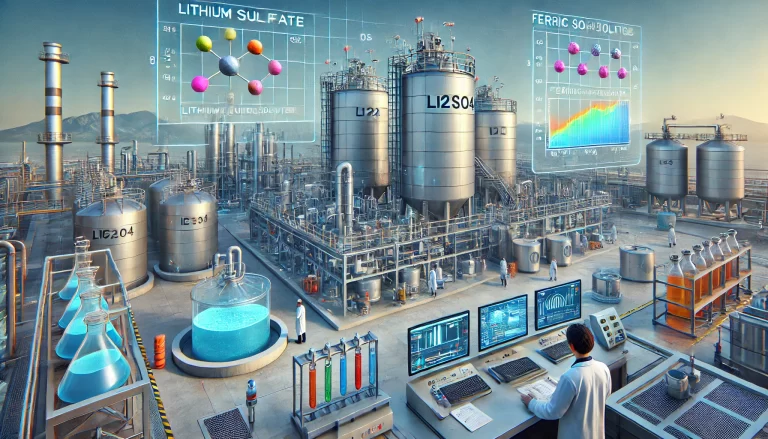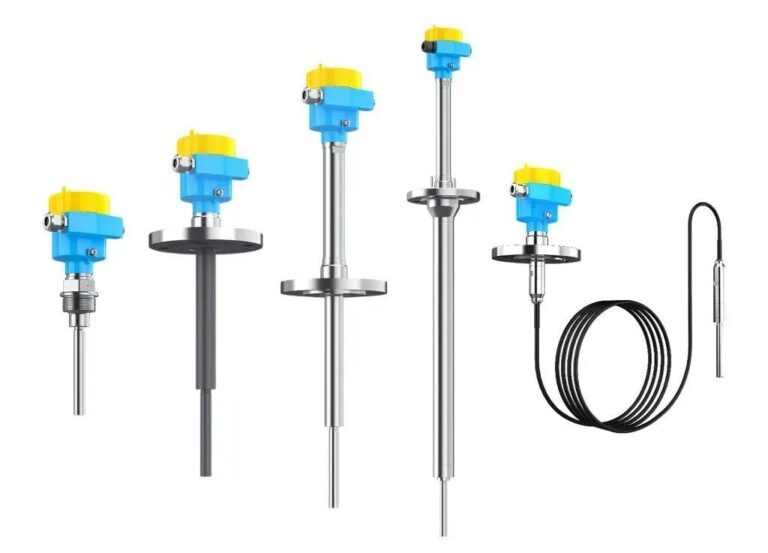1. Introduction
With the rapid development of the lithium battery industry, lithium sulfate (Li₂SO₄) and ferric sulfate (Fe₂(SO₄)₃) have emerged as essential chemical compounds in the supply chain. They serve not only as precursors for battery materials but also play critical roles in metallurgy, wastewater treatment, and catalysis.
Precise measurement of their purity and composition is crucial for process control, product performance, and industrial safety. This article explores the chemical characteristics of lithium sulfate and ferric sulfate, analyzes common measurement techniques and their associated challenges, and provides recommendations on level measurement instrumentation in industrial environments.

2. Chemical Characteristics and Industrial Applications
2.1 Lithium Sulfate (Li₂SO₄)
Lithium sulfate is a key intermediate in lithium extraction and is widely used as a precursor for cathode materials in lithium-ion batteries.
Key properties:
High solubility: Dissolves readily in water, forming Li⁺ and SO₄²⁻ ions—critical for lithium-ion conductivity in batteries.
Good ionic conductivity: Enhances the cycling life and capacity of lithium-based batteries.
Purity is critical, as impurities such as sodium, calcium, magnesium, and aluminum can negatively impact crystallization quality, ion exchange performance, and battery electrochemical stability.
2.2 Ferric Sulfate (Fe₂(SO₄)₃) and Ferrous Sulfate (FeSO₄)
Ferric and ferrous sulfates are common in battery precursor synthesis, water treatment, and metallurgy.
Key properties:
Redox activity: Fe²⁺ is easily oxidized to Fe³⁺, a reaction widely utilized in battery material synthesis (e.g., LiFePO₄).
Hydrolysis sensitivity: Fe³⁺ readily forms hydroxide precipitates, making pH and redox environment control essential.
High levels of impurities or unbalanced Fe²⁺/Fe³⁺ ratios can reduce the effectiveness and stability of downstream processes.

3. Analytical Techniques and Challenges
The goal of measuring these compounds is not only to meet quality standards but to ensure consistency, safety, and performance in production.
3.1 Lithium Sulfate – Methods and Considerations
a. ICP-OES (Inductively Coupled Plasma Optical Emission Spectrometry)
Widely used to detect lithium and metal impurities.
Advantages:
High sensitivity and multi-element detection.
Wide linear range from ppb to ppm.
Challenges:
Matrix effects due to high salt concentration.
Ion interference requires careful sample preparation and calibration.
b. Ion Chromatography (IC)
Used to quantify sulfate ions (SO₄²⁻) and other anions.
Advantages:
High-resolution separation of anions.
High precision, ideal for battery-grade analysis.
Challenges:
Potential interference from Cl⁻, NO₃⁻, etc.
Demands rigorous sample pretreatment.

3.2 Ferric/Ferrous Sulfate – Methods and Considerations
a. Redox Titration
A classic method using oxidizers (e.g., KMnO₄) to determine Fe²⁺ content.
Advantages:
High accuracy and cost-effective.
Challenges:
Fe²⁺ is prone to oxidation from air.
Requires oxygen-free environment during titration.
b. UV-Vis Spectrophotometry
Measures absorbance of iron complex ions.
Advantages:
Fast and simple.
Tolerant of mixed metal matrices.
Challenges:
Fe³⁺ hydrolysis may cause instability.
Requires chemical stabilization prior to measurement.

4. Level Measurement Instruments in Production
During the production and storage of lithium sulfate and ferric sulfate—whether in solid or liquid form—reliable level measurement is essential for inventory management, dosing control, and process safety.
4.1 Commonly Used Level Instruments
a. Radar Level Transmitters
Use microwave signals for non-contact level detection.
Advantages: High precision, unaffected by temperature, pressure, or vapor.
Application: Ideal for storage tanks and reactors containing corrosive lithium or iron sulfate solutions.
b. Ultrasonic Level Sensors
Utilize sound waves to detect level based on echo return time.
Advantages: Easy to install, low maintenance.
Application: Suitable for low-density liquids and remote measurement zones.
c. Tuning Fork Level Switches
Detect level by changes in vibration frequency.
Advantages: Reliable in solids, liquids, and slurry.
Application: Often used for high/low level alarms in hoppers and tanks.
4.2 Instrument Selection and Optimization
Measurement challenges include high temperature, strong chemical corrosion, and particulate interference. Instrument selection must consider:
Material compatibility
Installation environment
Required accuracy and reliability
Routine calibration and maintenance ensure long-term stability.

5. Conclusion and Future Trends
As the lithium battery sector evolves, measurement technologies must keep pace. More accurate, automated, and real-time measurement solutions are needed to support high-purity chemical processing.
The integration of smart sensors, real-time analytics, and digital control systems will be the future of chemical monitoring in battery material production.
